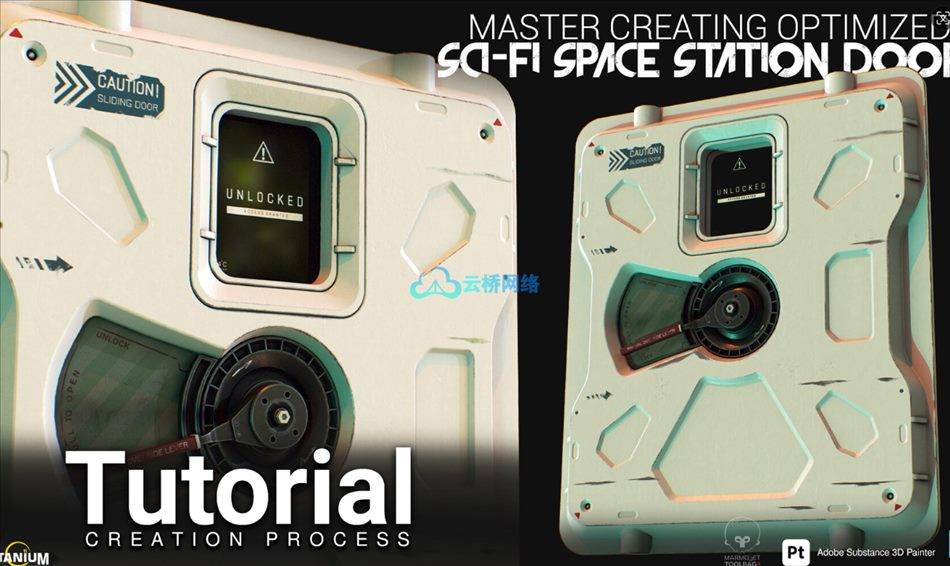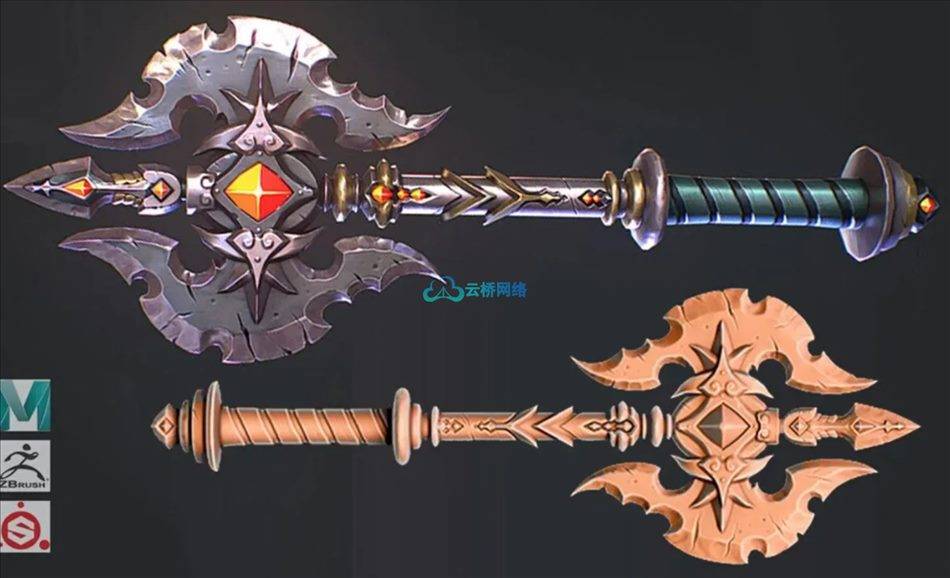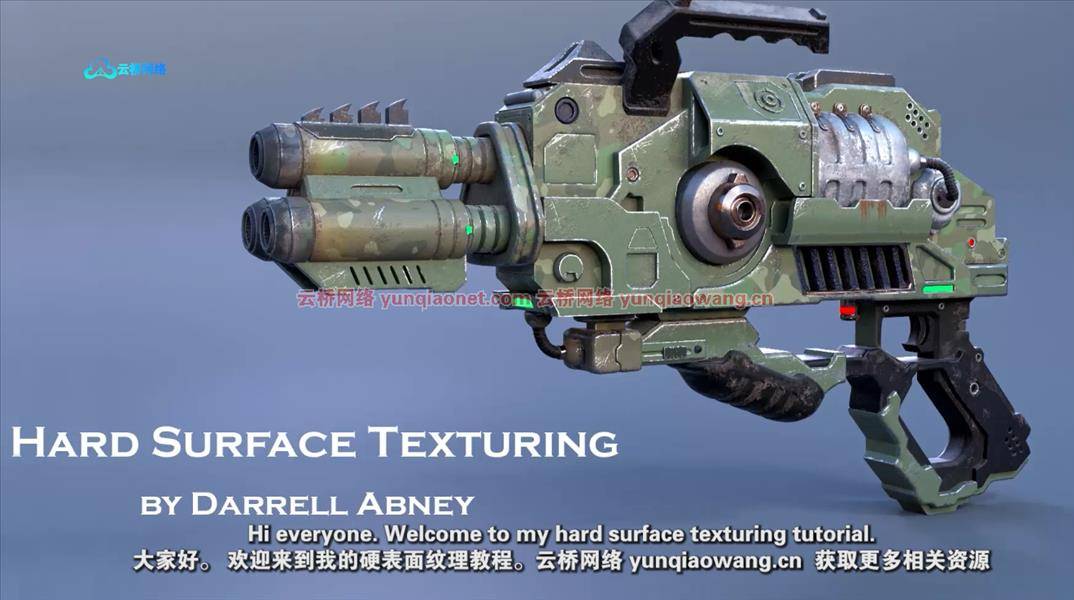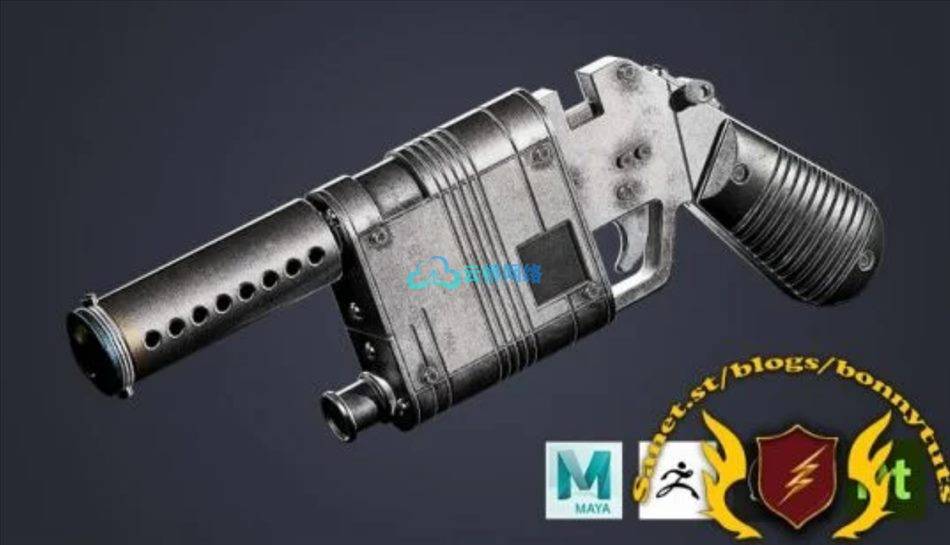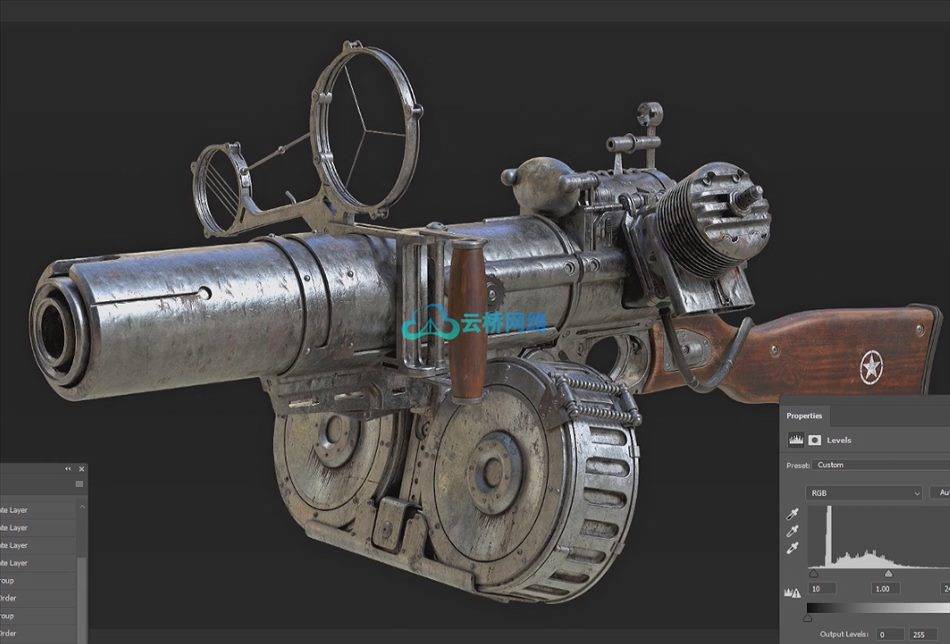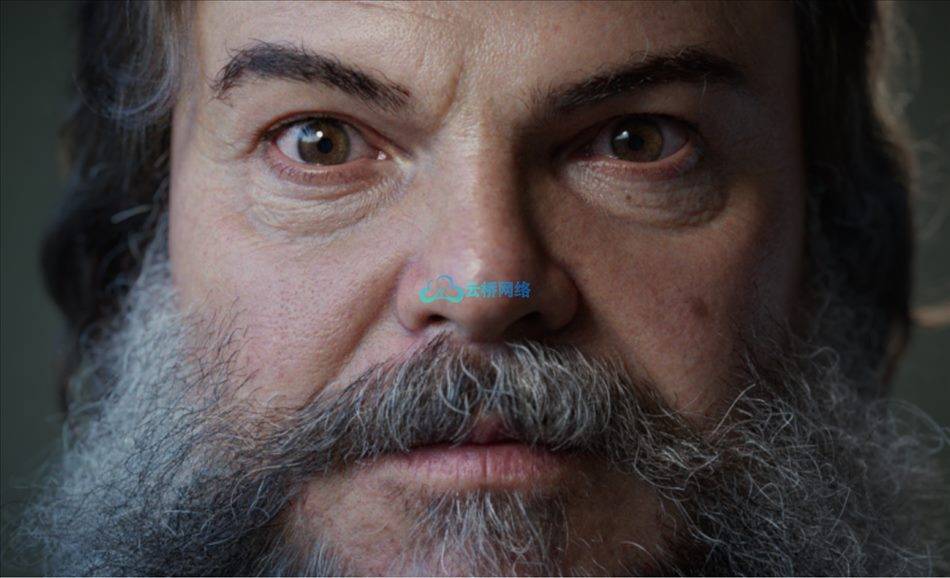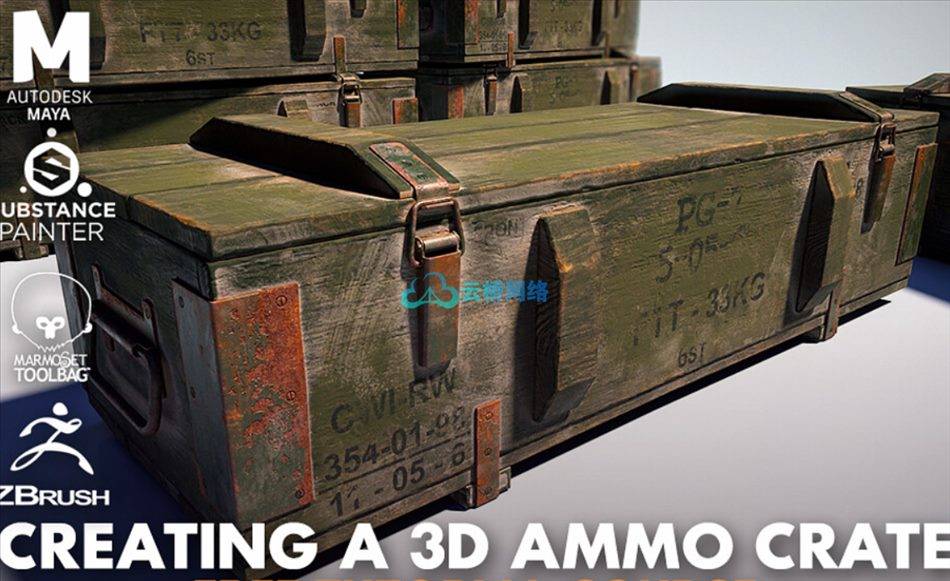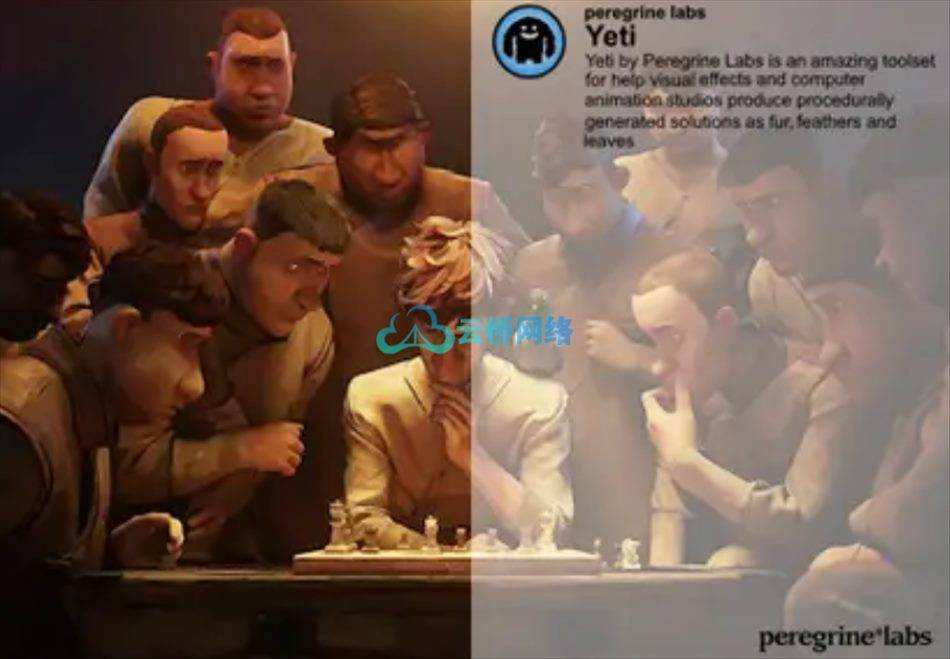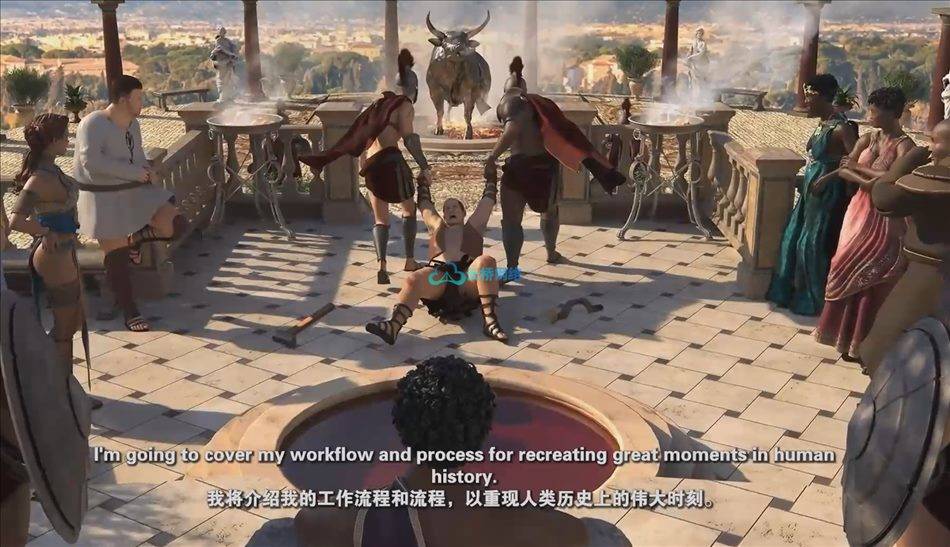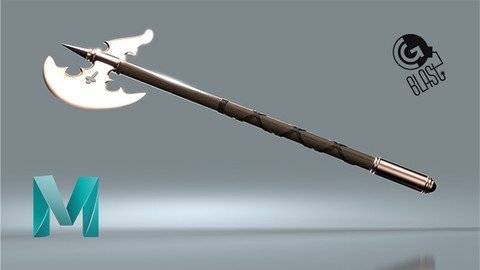
开始您的3D建模之旅,并通过这门针对Autodesk Maya初学者的全面课程打下坚实的基础,使用CGBLAST开始您的3D建模之旅,朝着电影和游戏行业的职业生涯迈出第一步!如果你对3D世界很好奇,想学习如何自己构建3D模型,但不知道从哪里开始,这个面向初学者的3D建模课程将教你如何从头开始创建3D模型。不需要任何先验知识。3D Modeling Course For Beginners In Maya
在这些课程中,您将学习如何使用Autodesk Maya软件以及如何设置专业的建模工作流。我们的主要目标是通过不同的任务和项目向您介绍3D建模技术和实践,这将帮助您建立3D建模的坚实基础。
课程是如何组织的?我们的3d建模课程被分成9个大的部分,每个部分你都应该能够在一周内完成。在课程开始时,我们将重点关注简单的对象创建,这将有助于您熟悉Maya软件及其工具集。随着你在每一部分的前进,我们会回顾一些理论的新方面,并通过逐渐创建更复杂的对象,添加更多的细节和真实感来将其应用于实践。
一旦你已经掌握了大部分的建模工具和技术,并且在Maya场景中感觉很舒服,我们就进入课程中最大的项目,创建一个充满复杂细节的3D模型。在建立这个模型的同时,你还将学习游戏的高多边形和低多边形建模技术。最后,你将完成课程,掌握如何创建UV贴图和准备模型纹理的知识和技能。
你会学到什么
您将对Maya界面感到舒适,并知道如何在场景中导航,使用不同的快捷键和工具进行建模和工作流优化
用简单的形状和它们的组成部分来勾画出你的想法,这将成为更复杂的工作的基础
您将学习重建拓扑的基础知识,以及如何应用其工具来创建3D模型的干净拓扑
从任何参考图像创建硬表面模型,添加颜色并设置渲染场景
建立一个有很多细节的高多边形模型,并为游戏创建低多边形版本
你将知道如何使用UV贴图以及如何创建它们,为你的模型准备纹理
要求
不需要有任何3D建模或Maya的经验。
您应该安装了Autodesk Maya,以便能够完成本课程。
MP4 |视频:h264,1280×720 |音频:AAC,44.1 KHz
语言:英语|大小:8.39 GB |时长:11小时 33分钟
本课程面向希望了解如何使用Autodesk Maya软件以及如何设置专业建模工作流的任何人,本课程是为希望学习如何从头开始创建3D模型并为未来工作打下坚实基础的初学者而设计的。,本课程是为任何希望在电影和游戏行业迈出职业生涯第一步的人准备的。
Start your 3D Modeling Journey and Build Strong Foundations with this Thorough Course for Beginners in Autodesk Maya
What you’ll learn
You will feel comfortable with Maya interface and know how to navigate in the scene, use different shortcuts and tools for modeling and workflow optimization
Block out your ideas using simple shapes and their components which will work as a base for more intricate work
You will learn the basics of retopology and how to apply its tools to create clean topoly of a 3D model
Create a hard surface model from any reference image, add color and set up a scene for rendering
Build a high poly model with lots of details and create its low poly version for games
You will know how to work with UV maps and how to create them that way preparing your model for texturing
Requirements
No need to have any previous experience with 3D modeling or Maya.
You should have Autodesk Maya installed to be able to follow along with this course.
Description
Start your 3D modeling journey with CGBLAST and take your first steps towards a career in the film and games industry!If you’re curious about the 3D world and would like to learn how to build 3D models yourself, but don’t know where to start, this 3D modeling course for beginners will teach you how to create 3D models from scratch. No prior knowledge is needed.In these classes you will learn how to use Autodesk Maya software and how to set up a professional workflow for modeling. Our main objective is to introduce you to 3D modeling techniques and practices through different tasks and projects which will help you build a solid foundation in 3D modeling.How is the course structured?Our 3d modeling course has been divided into 9 bigger sections, and each of them you should be able to complete within one week.At the beginning of the course we are focusing on simple object creation which will help you get familiarized with the Maya software and its toolset.As you move forward with each section we go over some new aspects of theory and use it in practice by gradually creating more complex objects, adding more detail and realism.Once you’ve covered the majority of the modeling tools and techniques, and feel comfortable within the Maya scene, we move onto our biggest project of the course and create a 3D model full of intricate details. While building this model you will also learn about high poly and low poly modeling techniques for games.Finally, you will finish the course having the knowledge and skills of how to create UV maps and prepare your model for texturing.
Overview
Section 1: Introduction to Maya & Modeling Tools
Lecture 1 Overview of Maya Interface & Navigation
Lecture 2 Editing Polygon Primitives & their Parameters
Lecture 3 Customizing Interface & Optimizing your Workflow
Lecture 4 Overview of the Modeling Toolkit & Object Components
Lecture 5 Sword Project: Blocking out the Handle. The Multicut Tool
Lecture 6 Sword Project: Adding More Details Pt. 1. The Extrude Tool
Lecture 7 Sword Project: Adding More Details Pt. 2
Lecture 8 Sword Project: Finishing Touches. Smooth vs. Sharp Edges
Lecture 9 Sword Project: Organizing & Cleaning Up the Scene
Section 2: Modeling a Simple Object from the Reference
Lecture 10 Axe Project: Blade Pt. 1. Importing the Reference
Lecture 11 Axe Project: Blade Pt. 2. Mirroring & Soft Selection
Lecture 12 Axe Project: Blade Pt. 3. Merging & Bridging Components, Combining Objects
Lecture 13 Axe Project: Handle
Lecture 14 Axe Project: Leather Straps. Deformers
Lecture 15 Axe Project: Final Details & Coloring
Section 3: Introduction to Retopology and its Tools
Lecture 16 Overview of the Manual Retopology Using the Quad Draw Tool
Lecture 17 Retopologizing the Head: Creating First Loops. Symmetry
Lecture 18 Retopologizing the Head: Nose & Mouth
Lecture 19 Retopologizing the Head: Technique for Reducing Density
Lecture 20 Retopologizing the Head: Ears. Technique for Increasing Density
Section 4: Hard Surface 3D Modeling
Lecture 21 Post Apocalyptic Tank Project: Concept Art Analysis & Main Shape Blockout
Lecture 22 Post Apocalyptic Tank Project: Wheels
Lecture 23 Post Apocalyptic Tank Project: Main Body in More Detail
Lecture 24 Post Apocalyptic Tank Project: Windows & Headlights
Lecture 25 Post Apocalyptic Tank Project: Front Grille
Lecture 26 Post Apocalyptic Tank Project: Tracks
Lecture 27 Post Apocalyptic Tank Project: Gun & Exhaust Pipes
Section 5: Finalizing Post Apocalyptic Tank Project & Rendering
Lecture 28 Post Apocalyptic Tank Project: Final Details
Lecture 29 Post Apocalyptic Tank Project: Organizing & Cleaning Up the Scene
Lecture 30 Staging & Cameras
Lecture 31 Introduction to Materials
Lecture 32 Introduction to Scene Rendering
Section 6: High Poly Modeling
Lecture 33 Tram Robot Project: Analyzing the Reference & Setting Up the Scene
Lecture 34 Tram Robot Project: Blocking Out the Main Shapes
Lecture 35 Tram Robot Project: Windows & Doors
Lecture 36 Tram Robot Project: Rooftop, Side Panels & Bumper
Lecture 37 Tram Robot Project: Legs
Lecture 38 Tram Robot Project: Adding More Details
Lecture 39 Tram Robot Project: Arms
Lecture 40 Tram Robot Project: Screen & Frame
Lecture 41 Tram Robot Project: Pantograph
Lecture 42 Tram Robot Project: Working on the Smallest Details
Lecture 43 Tram Robot Project: Fast Forward Detailing
Lecture 44 Tram Robot Project: Adding Imperfections
Lecture 45 Tram Robot Project: Modeling Details by Using Deformers
Lecture 46 Tram Robot Project: Summary
Section 7: Low Poly Modeling for Games
Lecture 47 Tram Robot Project: Fixing Mistakes & Cleaning Up the Scene
Lecture 48 Tram Robot Project: Creating a High Poly Version
Lecture 49 Tram Robot Project: Working on the Low Poly Version
Lecture 50 Tram Robot Project: Reducing the Polygon Count
Lecture 51 Summarizing the Differences Between Low Poly & High Poly Versions
Section 8: Introduction to UVs and UV Tools
Lecture 52 Understanding UVs
Lecture 53 Overview of Default Texture Maps
Lecture 54 Importance of the Seams and Resolution
Lecture 55 Polygon Clean Up
Lecture 56 Editing UV Maps. Overview of the UV Toolkit
Lecture 57 Cutting & Sewing UV Maps
Lecture 58 Laying Out UV Shells
Lecture 59 Creating & Projecting UV Maps
Lecture 60 Unfolding UV Maps
Lecture 61 Distributing UV Shells
Section 9: Preparing a Model for Texturing: UV Mapping in Practice
Lecture 62 Final Preparations & Planning for UV Mapping
Lecture 63 Working on UVs: Front Panel
Lecture 64 Working on UVs: Bumper & Rooftop
Lecture 65 Working on UVs: Pantograph
Lecture 66 Working on UVs: Screen & Side Panels
Lecture 67 Working on UVs: Leg Detail
Lecture 68 Working on UVs: Fast Forward Arms, Legs & Other Details
Lecture 69 UV Layout
This course is for anyone who wants to know how to use Autodesk Maya software and how to set up a professional workflow for modeling.,This course was designed for beginners that want to learn how to create 3D models from scratch and lay a solid foundation for future work.,This course is meant for anyone that wishes to take their first steps towards a career in the film and games industry.
1、登录后,打赏30元成为VIP会员,全站资源免费获取!
2、资源默认为百度网盘链接,请用浏览器打开输入提取码不要有多余空格,如无法获取 请联系微信 yunqiaonet 补发。
3、分卷压缩包资源 需全部下载后解压第一个压缩包即可,下载过程不要强制中断 建议用winrar解压或360解压缩软件解压!
4、云桥CG资源站所发布资源仅供用户自学自用,用户需以学习为目的,按需下载,严禁批量采集搬运共享资源等行为,望知悉!!!
5、云桥CG资源站,感谢您的关注与支持!



